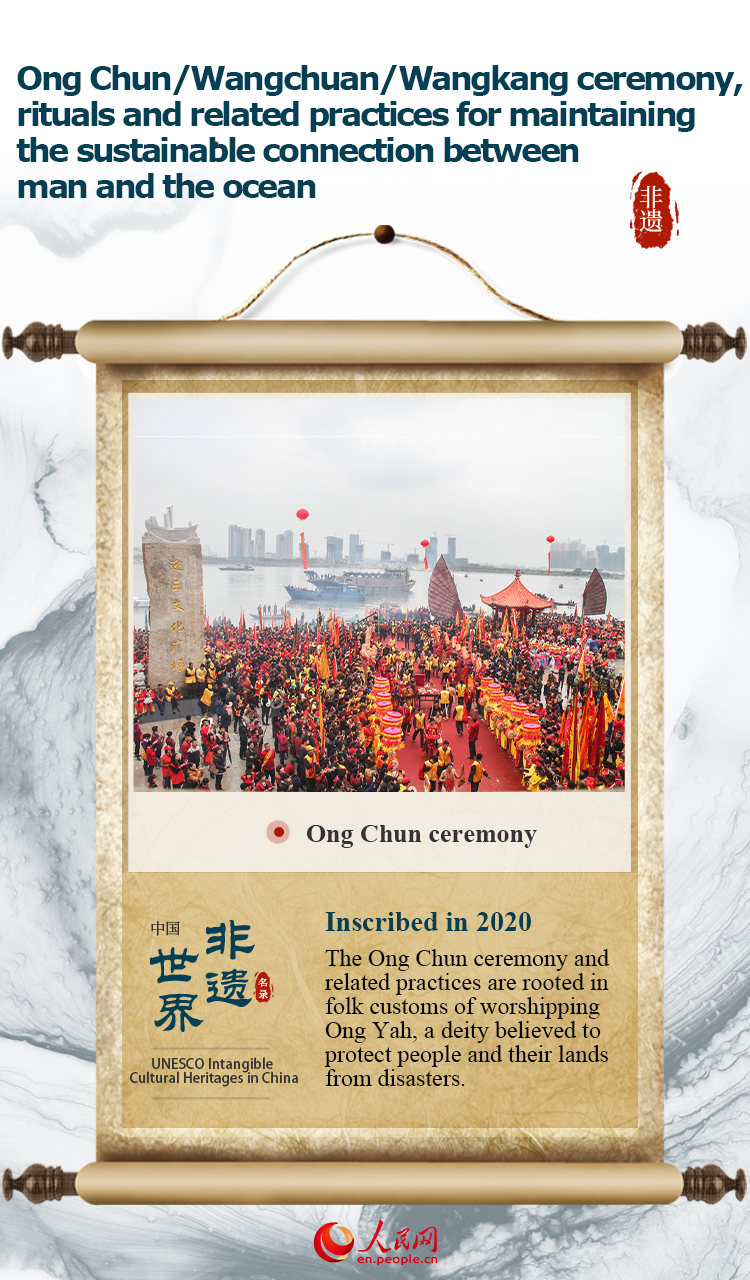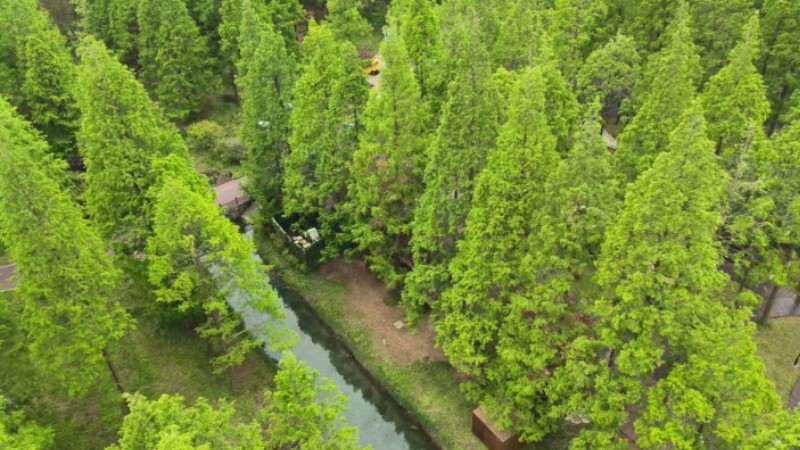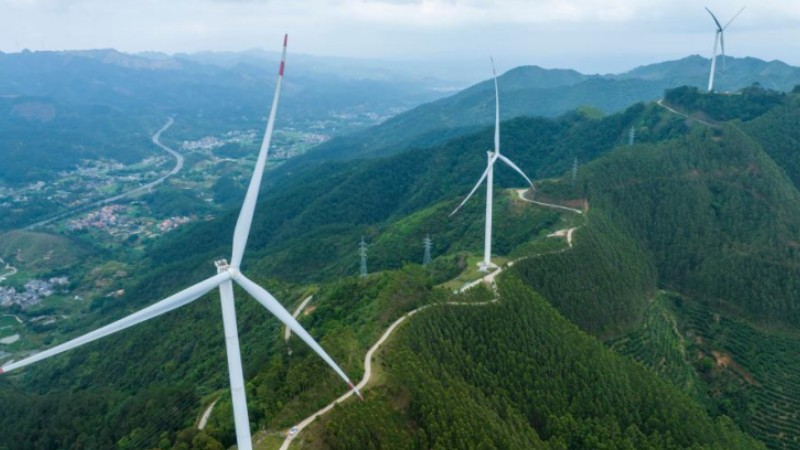UNESCO's Intangible Cultural Heritages in China (Ⅲ) (2)
Ong Chun/Wangchuan/Wangkang ceremony, rituals and related practices for maintaining the sustainable connection between man and the ocean
The item, "Ong Chun/Wangchuan/Wangkang ceremony, rituals and related practices for maintaining the sustainable connection between man and the ocean", was inscribed on UNESCO's Representative List of the Intangible Cultural Heritage of Humanity in 2020.
The Ong Chun ceremony and related practices are rooted in folk customs of worshipping Ong Yah, a deity believed to protect people and their lands from disasters.
Developed in China’s Minnan region between the fifteenth and seventeenth centuries, the element is now centered in the coastal areas of Xiamen Bay and Quanzhou Bay, as well as in the Chinese communities in Melaka, Malaysia.
Those who died at sea are considered as ‘good brothers’ who become lonely, wandering souls. The ceremony begins by people gathering at the seaside to welcome Ong Yah to temples or clan halls, while lamp poles are erected to summon 'good brothers' and deliver them from torment. In this way, the element has been celebrated as 'doing good deeds'. Performances head the procession and clear a path for Ong Yah's barge (wooden or paper-made models).
The element evokes the historical memory of ancestors’ ocean-going, reshapes social connections when confronted with emergencies such as shipwrecks, and honours the harmony between man and the ocean. It also bears witness to the intercultural dialogue among communities.
 |  |
Photos
Related Stories
- Feature: Chinese classical music resonates in ancient Swiss city
- Chinese culture exhibition held in Paris
- How China helps preserve cultural heritage sites in Asia
- Museum in NW China's Gansu uses latte art to give more people a taste of culture
- Chinese culture courses launched in Myanmar's Yangon
- Sound of replicas of Chime Bells of Marquis Yi of Zeng digitally preserved
- China encourages integrating intangible cultural heritage, tourism
- Digital technologies help revitalize ancient city wall in NW China
- China's cultural, tourist market rebounds during Spring Festival holiday
- UNESCO’s Intangible Cultural Heritages in China (I)
Copyright © 2023 People's Daily Online. All Rights Reserved.










